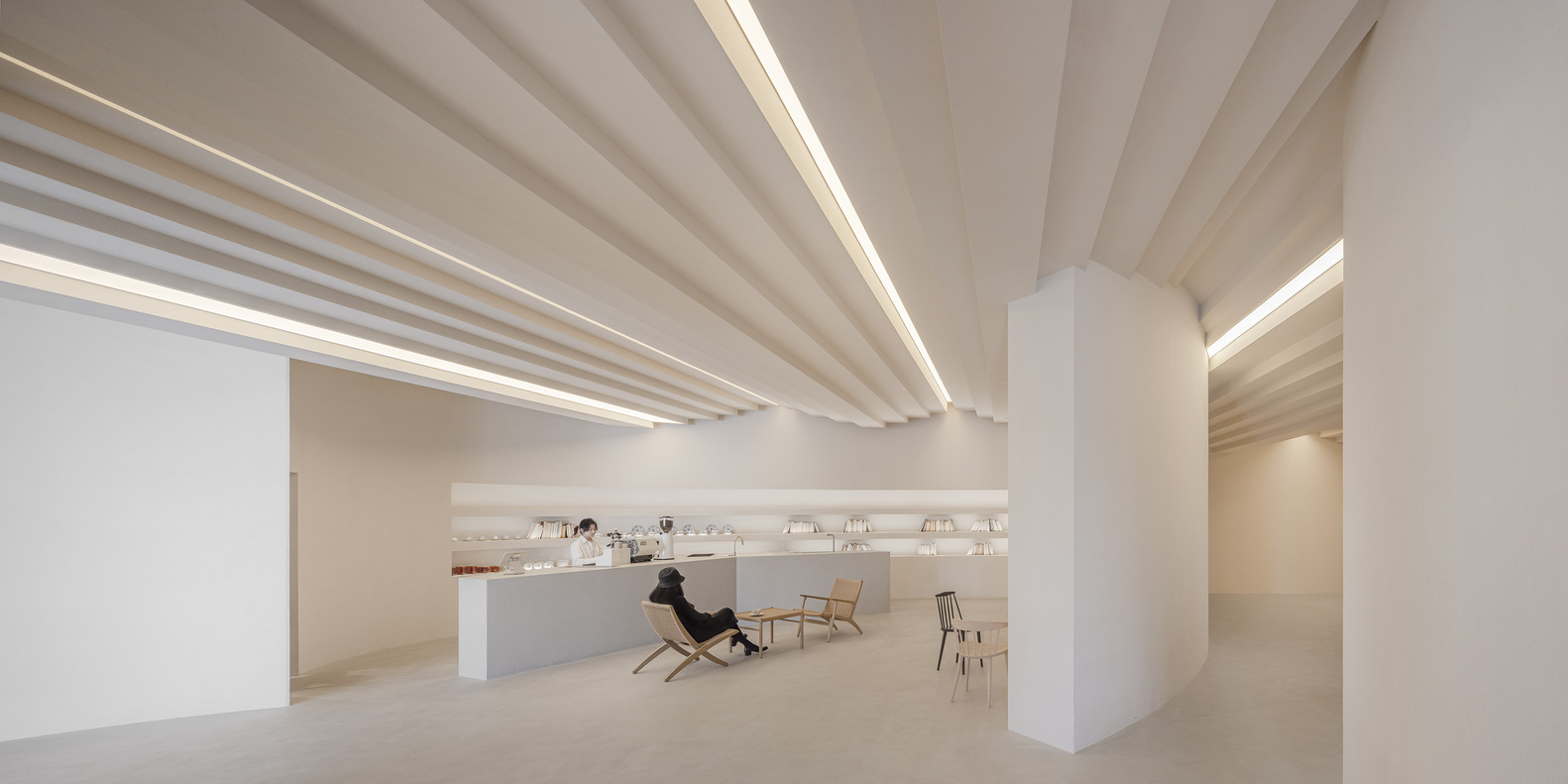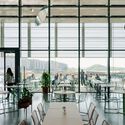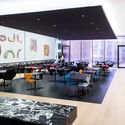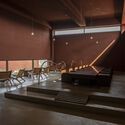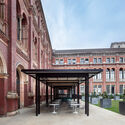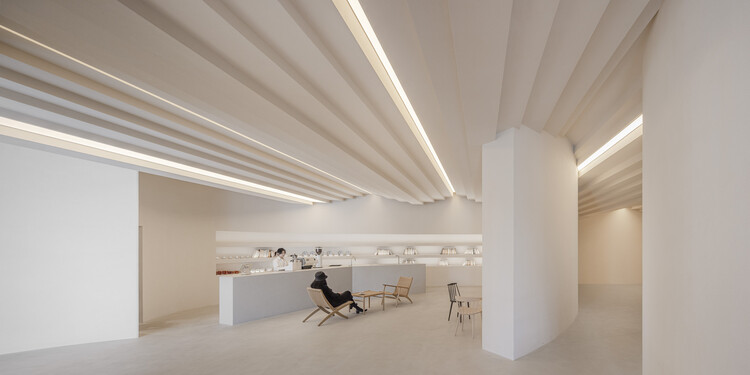 Simple Art Museum / HAS design and research. © W Workspace
Simple Art Museum / HAS design and research. © W Workspace
Share
Share
Or
https://www.archdaily.com/1030691/museum-and-gallery-cafes-10-examples-that-enhance-the-cultural-experience
Cafés in museums and galleries do more than provide convenience — they have become an essential part of today’s cultural experience. As Claire Bishop explains in her idea of the “expanded aesthetic experience,” cultural spaces now include hybrid environments that encourage new ways of engaging, socializing, and reflecting. In this context, cafés are not just places to rest; they extend the visit on both sensory and symbolic levels, offering moments of interaction and contemplation in carefully designed settings. By blending architecture, art, and hospitality, they help create immersive and welcoming atmospheres — a concept already hinted at by Brian O’Doherty, who viewed exhibition spaces as an integral part of the artwork itself.
This growing focus on cafés is reflected in architectural projects that treat them as meaningful parts of cultural institutions, designed in harmony with their setting and mission. In places like the Kunsthaus Graz in Austria and the new Munch Museum in Norway, the café stands out as a key architectural feature, thoughtfully designed with attention to materials, natural light, visitor flow, and views of the surrounding landscape. In some cases, these cafés even act as conceptual extensions of the museum’s content, deepening the connection between space and exhibition.
Faced with this range of design approaches, we can categorize museum and gallery cafés into three main architectural categories: those fully integrated into the museum’s design language, those that create a contemporary contrast within historic buildings, and those that stand out as independent spaces with a strong architectural identity. Each approach offers a different way of connecting art, architecture, and public experience, reinforcing the café’s role as a bridge between culture and daily life.
Related Article Beans and Beams: 17 Projects that Explore the Design Elements of Coffee Shops 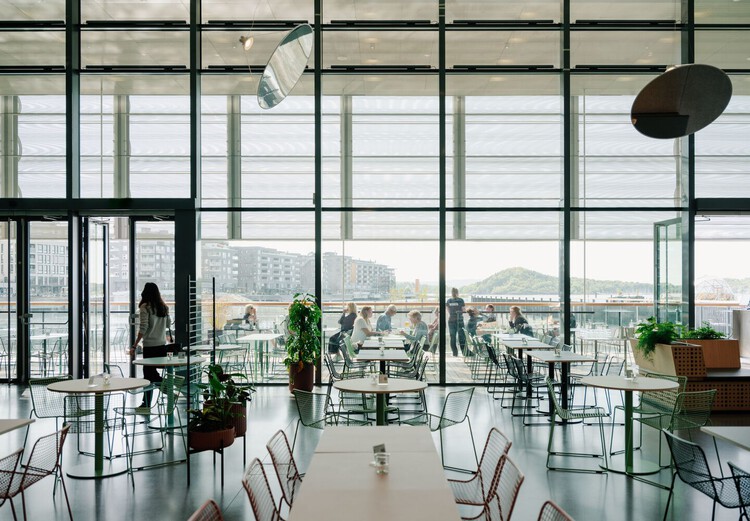 New Munch Museum / Estudio Herreros.© Einar AslaksenFormal Integration with the Museum Design
New Munch Museum / Estudio Herreros.© Einar AslaksenFormal Integration with the Museum Design
In this approach, the café is designed as part of the museum or gallery from the beginning, following the same architectural concepts, materials, and style. The space flows naturally — shapes, lighting, transparency, and circulation are all aligned to reinforce a unified identity. Visitors stay immersed in the museum’s architectural language, even during a break, resulting in a smooth and cohesive experience.
Moreira Salles Institute / Andrade Morettin Arquitetos Associados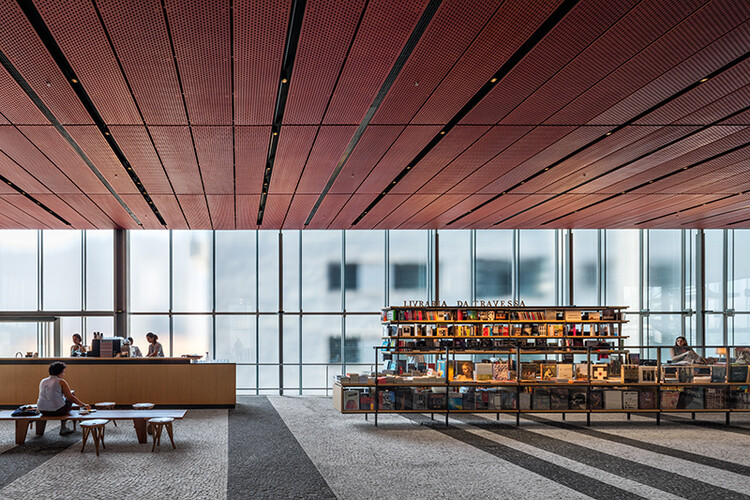 Moreira Salles Institute / Andrade Morettin Arquitetos Associados. © Nelson KonDscape Café / DENOVA
Moreira Salles Institute / Andrade Morettin Arquitetos Associados. © Nelson KonDscape Café / DENOVA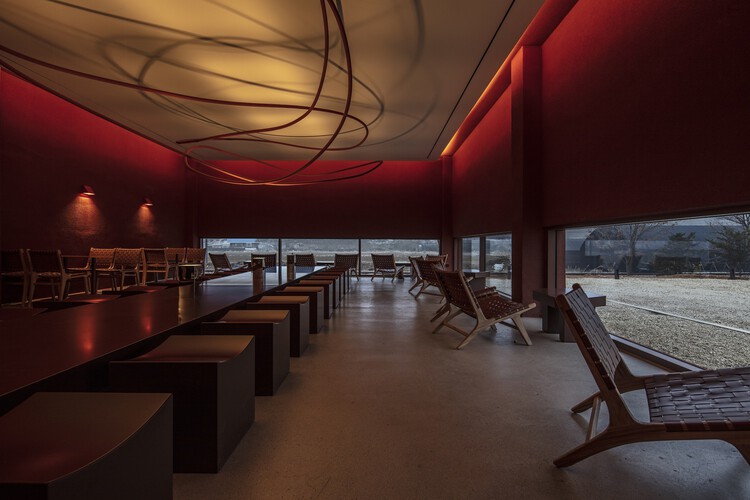 Dscape Café / DENOVA. © Kiwoong HongSimple Art Museum / HAS design and research
Dscape Café / DENOVA. © Kiwoong HongSimple Art Museum / HAS design and research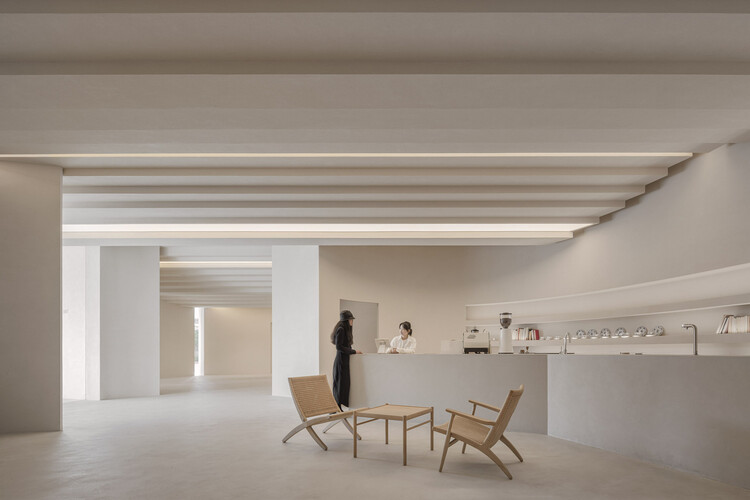 Simple Art Museum / HAS design and research. © W WorkspaceContemporary Insertions in Historic Buildings
Simple Art Museum / HAS design and research. © W WorkspaceContemporary Insertions in Historic Buildings
In this case, the café is a modern architectural intervention added to a historic or heritage building. It’s designed to create a clear contrast between old and new, often using light materials, metal structures, glass, or contemporary furniture. This contrast highlights the building’s history while adding new layers of use and meaning. These cafés are often designed to be reversible, respecting the original architecture while offering modern amenities.
Mine Museum and Archive’s Café / MACh Arquitetos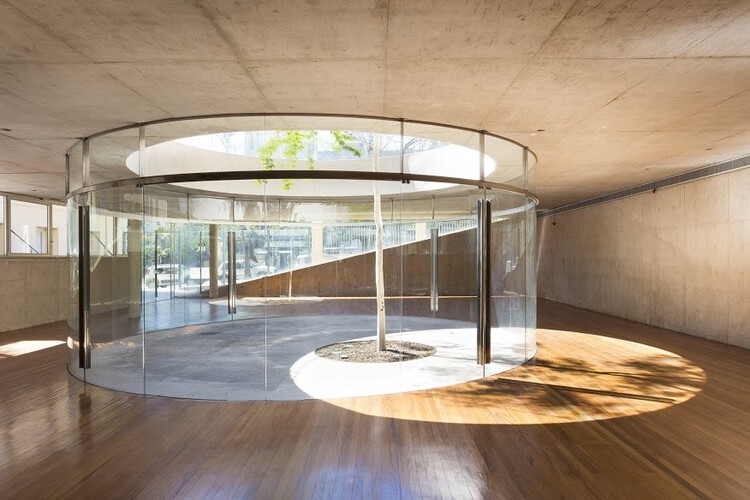 Mine Museum and Archive’s Café / MACh Arquitetos. © Gabriel CastroV&A Garden Cafe / Reed Watts Architects
Mine Museum and Archive’s Café / MACh Arquitetos. © Gabriel CastroV&A Garden Cafe / Reed Watts Architects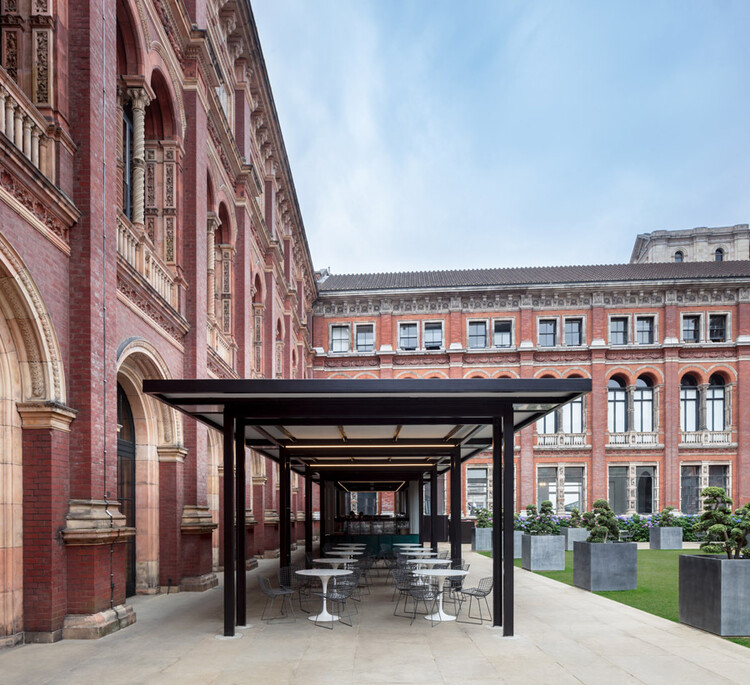 V&A Garden Cafe / Reed Watts Architects. © Simon KennedyMuseum of Modern Art Renovation / Diller Scofidio + Renfro
V&A Garden Cafe / Reed Watts Architects. © Simon KennedyMuseum of Modern Art Renovation / Diller Scofidio + Renfro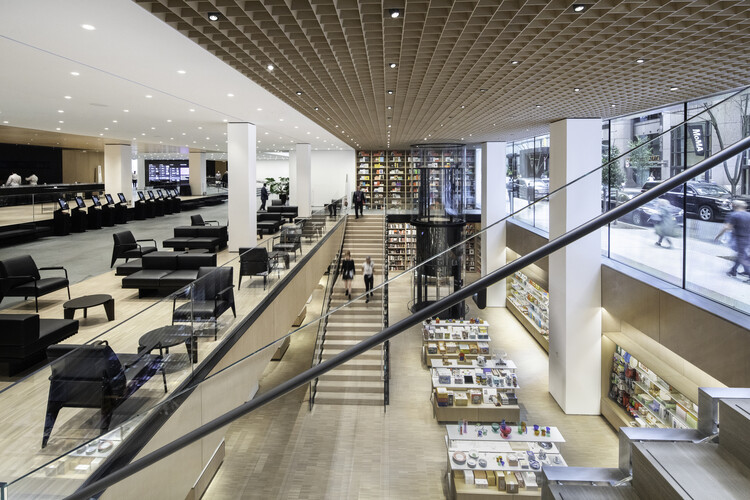 Museum of Modern Art Renovation / Diller Scofidio + Renfro. © Brett BeyerArchitectural Highlights and Independent Spaces
Museum of Modern Art Renovation / Diller Scofidio + Renfro. © Brett BeyerArchitectural Highlights and Independent Spaces
Some cafés are designed to be visually striking and spatially unique, becoming attractions on their own. These cafés go beyond serving the museum — they may connect directly with public streets or plazas, acting as independent social spaces. Their form, materials, and atmosphere are carefully crafted to make a strong sensory impact. In these cases, the café stands apart from the museum, asserting its own identity and drawing people in on its own terms.
V&A Dundee / Kengo Kuma & Associates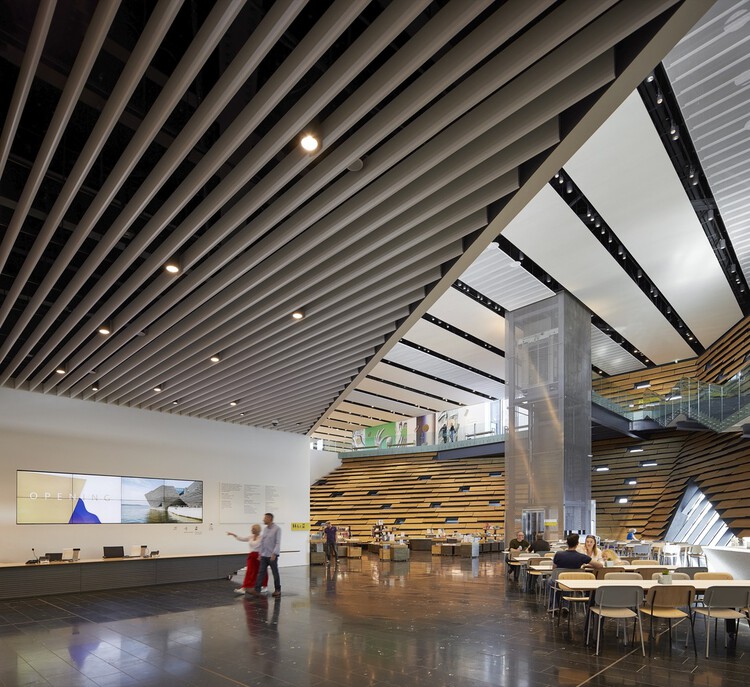 V&A Dundee / Kengo Kuma & Associates. © Hufton+CrowB131 Café / Jiangjie Office
V&A Dundee / Kengo Kuma & Associates. © Hufton+CrowB131 Café / Jiangjie Office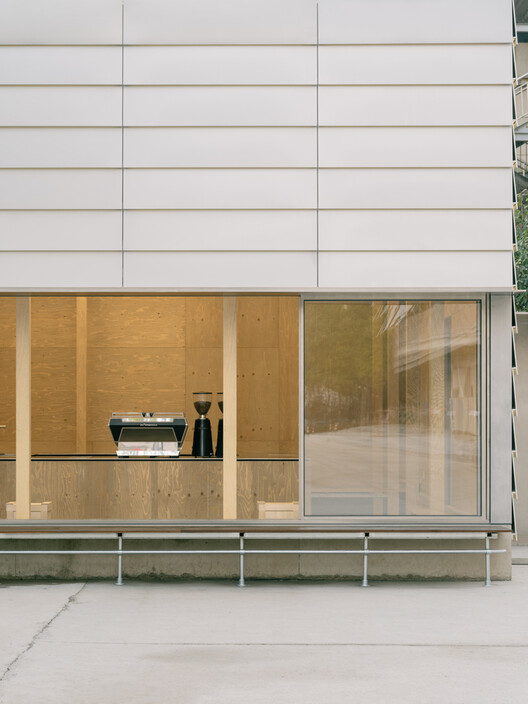 B131 Café / Jiangjie Office. © Wen StudioAnne Frank House Museum Cafe / Namelok
B131 Café / Jiangjie Office. © Wen StudioAnne Frank House Museum Cafe / Namelok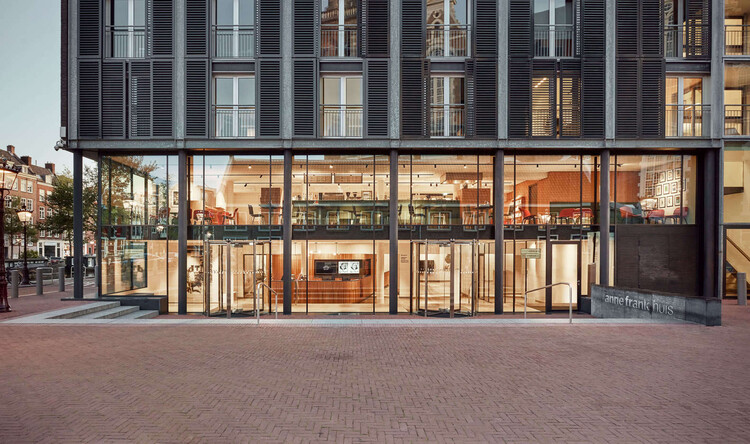 Anne Frank House Museum Cafe / Namelok. © Maarten WillemsteinChimney Café / GOA
Anne Frank House Museum Cafe / Namelok. © Maarten WillemsteinChimney Café / GOA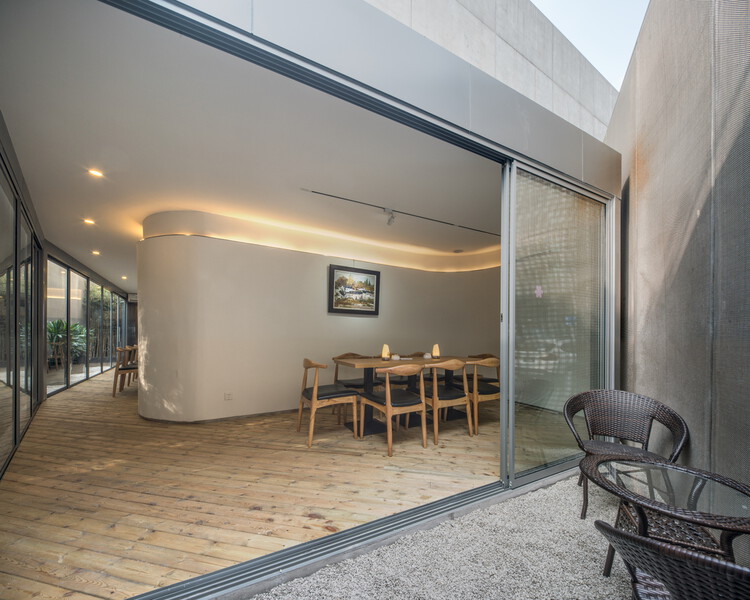 Chimney Café / GOA. © Lu Hengzhong
Chimney Café / GOA. © Lu Hengzhong
This article is part of an ArchDaily series that explores interior architecture features using our own project database as a starting point. Each month, we highlight how architects and designers around the world are using new elements, design strategies, and creative signatures in interior spaces. As always, at ArchDaily, we greatly value input from our readers. If you believe there are specific ideas we should cover, feel free to send us your suggestions.
